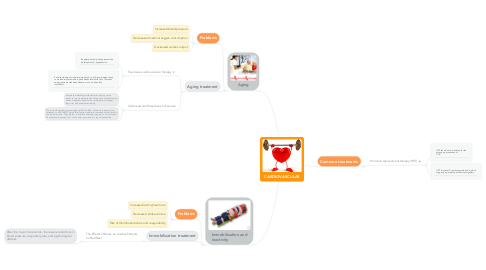
1. Immobilization and inactivity
1.1. Problems
1.1.1. Increased resting heart rate
1.1.2. Decreased stroke volume
1.1.3. Risk of thromboembolism and coagulability
1.2. Immobilization treatment
1.2.1. The Effects of Music on Cardiac Patients on Bed Rest
1.2.1.1. After the music intervention, there were reductions in blood pressure, respiratory rate, and psychological distress
2. Aging
2.1. Problems
2.1.1. Increased blood pressure
2.1.2. Decreeased maximal oxygen consumption
2.1.3. Decreased cardiac output
2.2. Aging treatment
2.2.1. Exercise as cardiovascular therapy
2.2.1.1. Regular physical activity prevents the development of hypertension
2.2.1.2. Exercise training at moderate intensity, 3 to 5 times per week, leads to marked improvements in peak fitness levels after 8 to 10 weeks among patients with heart disease, much as in healthy individuals.
2.2.2. Cardiovascular Responses to Exercise
2.2.2.1. Despite the relatively marked effects of aging on the response to a single episode of exercise as outlined, aging had no significant effect on the cardiovascular changes that occur with endurance training.
2.2.2.2. The 6-month training program began at 50% to 60% of heart rate reserve and increased to 80% to 85% by the third-fourth month and continued at that level for the remaining time. The program consisted of walking, jogging, and bicycling for 45 minutes per session, four or five times per week, in a supervised setting.
3. Common treatments
3.1. Hormone replacement therapy (HRT)
3.1.1. HRT should not be initiated for the secondary prevention of CVD
3.1.2. HRT increases C-reactive protein levels, which suggests a possible proinflammatory effect
